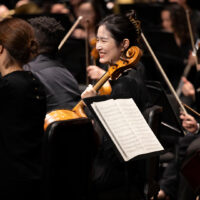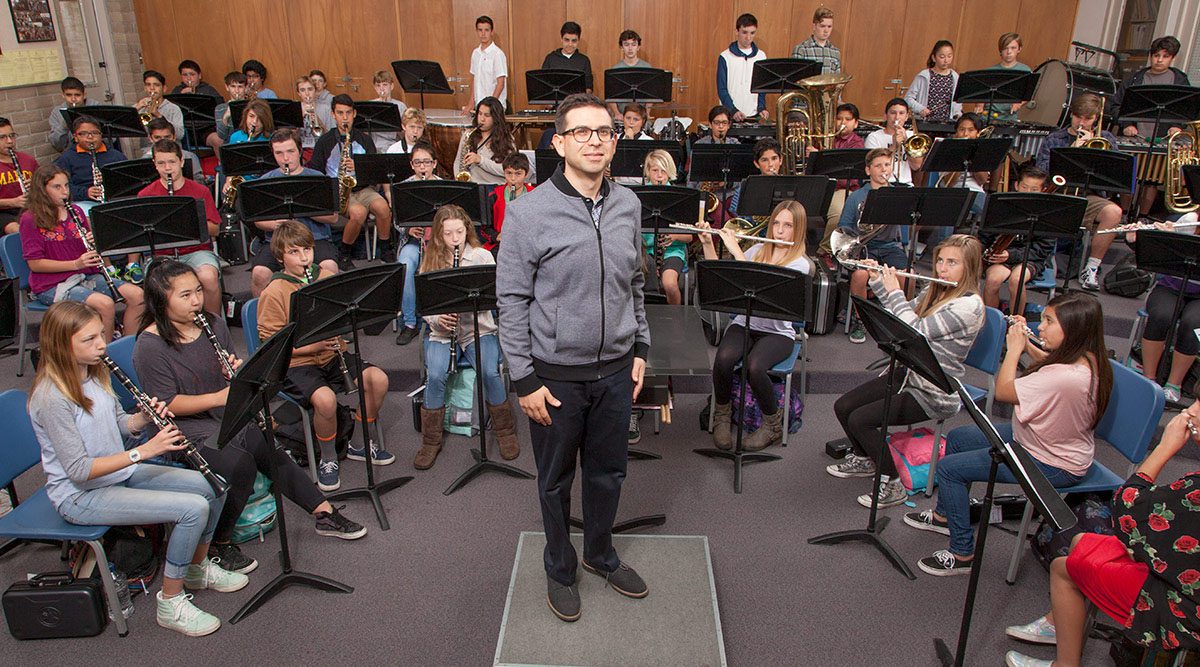
Four Effective Music Teaching Strategies for Today’s Diverse Classrooms
By focusing on inclusion and engagement, musicians can use their performance backgrounds to become leaders in today's music education.
By
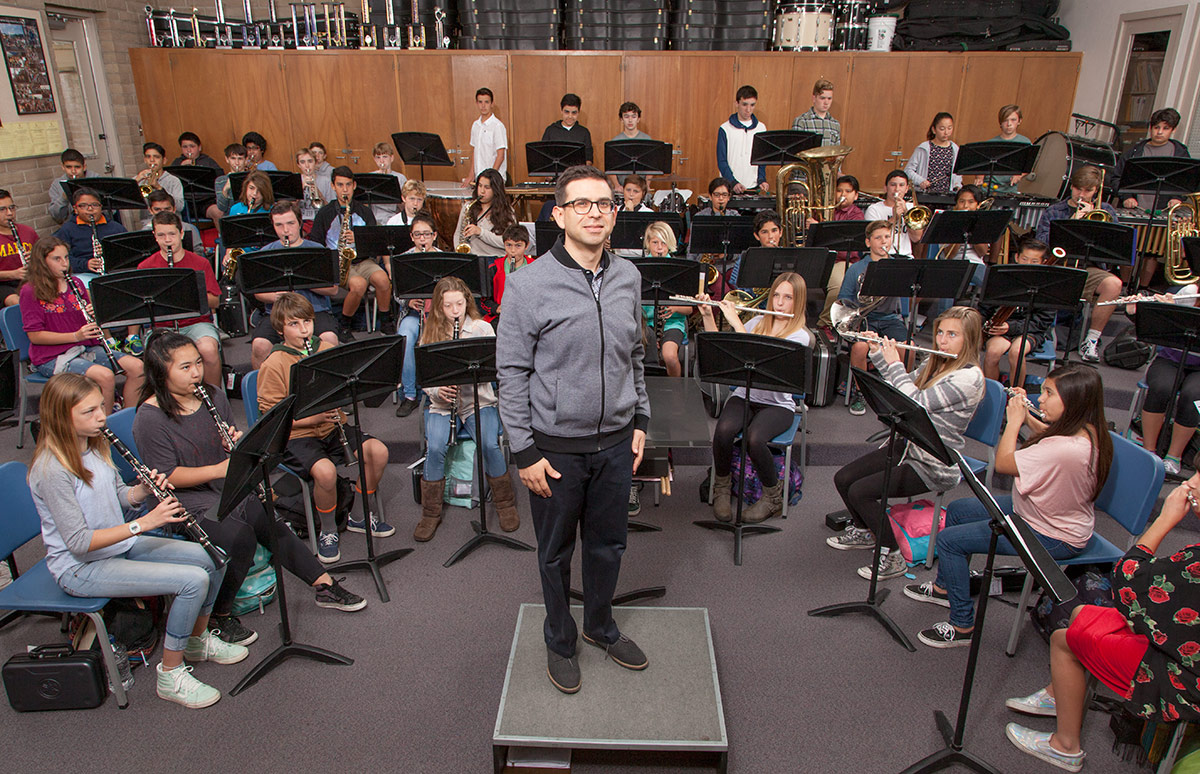
USC Thornton alumnus Richard Perez rehearses with his students at Marco Foster Middle School in San Juan Capistrano. (Photo by Noe Montes)
The landscape of music education has changed drastically over the past decade. We have a better understanding of the needs of the modern classroom, and there are more resources available than ever, but rigid school systems can be slow to embrace change. In many cases, it’s up to music teachers to pave the way for a contemporary music education experience and replace traditional teaching strategies with innovative ones that focus on inclusion and engagement.
Below are four contemporary music teaching strategies you can employ to foster an engaged and inclusive classroom.
1. Incorporate Technology
One of the most significant drawbacks of traditional music teaching methods is that they underutilize technology. Today’s students are the most technologically literate generation to date – much more so than their teachers – and there is a vast amount of music teaching technology available that can be a powerful conduit to learning.
From creative music theory lessons on YouTube to guided learning through educational apps, music technology is proven to be more engaging in the classroom. Digital Audio Workspaces (DAW) are a particularly popular resource to incorporate. Many students jump at the chance to learn production and composition using cloud-based DAW apps like Soundation and SoundTrap.
Tools like GarageBand, Logic, Pro Tools, or Ableton Live are also possible, not to mention a wealth of free music composition apps available to students and teachers. Some music technology can be prohibitively expensive, and it doesn’t do much good if students can only use it when they’re at school. That’s why Thornton alum Jim Wang uses accessible technology to teach production and composition skills with GarageBand for iOS.
“Students have this powerful DAW system in their hands,” said Wang, “You show them how it works, and they’re off on their own.”
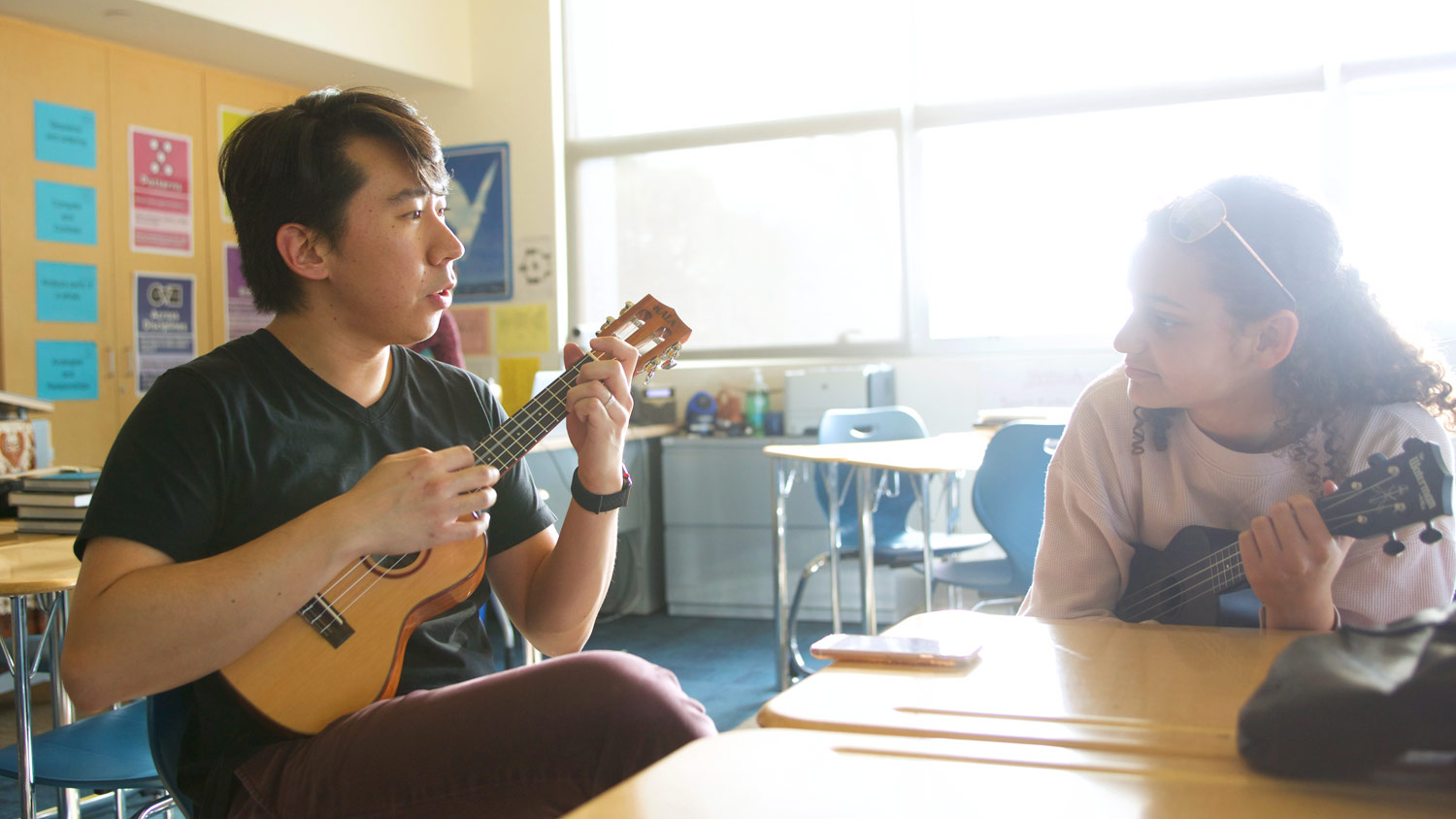
Jim Wang (left) leads a ukulele lesson with Sophie Christmas, at Lincoln Middle School in Santa Monica. (Photo by Dario Griffin/USC Thornton)
2. Create an Inclusive Classroom
Inclusivity in a contemporary music classroom means engaging students of all learning styles, backgrounds, and ability levels. As an educator, inclusivity and versatility go hand in hand. A contemporary music teacher should be able to pivot from leading a jazz ensemble in the morning to teaching a world music lesson in the afternoon, to directing an after-school rock band.
“Great orchestras, choirs, and bands have been a hallmark of fine music education, but if you offer keyboard, guitar, and songwriting classes in addition to the classic repertoire, a wider variety of students’ musical needs are met,” said Robert Cutietta, Dean of USC Thornton. “If schools offer wider musical options, music education will be transformed to better meet the needs of the contemporary world.”
Inclusivity goes beyond the range of musical genres. A genuinely inclusive classroom is one that is respectful of present diversity, adapts to the needs of all learners, and provides opportunities for collaboration between students.
Students in Thornton’s Music Teaching & Learning program took classes in the Rossier School of Education to learn skills for teaching diversity. Courses in the Music Teaching & Learning program address many of these issues.
3. Focus on Engagement
Many music teachers have the extraordinary opportunity to have a meaningful impact on their students’ musical journeys and keep their minds in healthy shape. Music is a gift, but it’s one that has to be readily accepted by the giftee. You can’t force music on an unwilling student. Tastes vary widely, and it can be a daunting task to execute an educational and cohesive curriculum that’s engaging and responsive to individual interests.
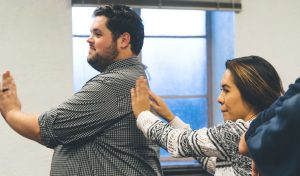
Alum Ryan Williams (Photo by Chris O’Brien/USC Thornton)
For USC Thornton alumni Ryan Williams, engaging his students means scouring the internet for film scores and catering to his students’ interests.
“No one goes through the day without engaging in music in some way, and we are trying to change what is considered appropriate in music education,” said Williams, “Why can’t we discuss hip hop or R&B in a classroom setting?”
Four Simple Ways to Engage Music Students
Try to teach skills and concepts that will stoke the fire of self-discovery at home. For example:
Teach basic improvisational skills
Show students how they can create simple loops to play over in GarageBand
Learn what your students are listening to
Find out what your students are listening to and craft lessons around the music. Don’t write off a genre like Soundcloud Rap if over half of your class are fans of it.
Embrace individual interests
Teach foundational skills or concepts in a way that allows students to use their individual preferred genres of music as the subject of study.
Incorporate technology
Find ways to use technology interactively to teach less-engaging concepts.
4. Embrace the Artist-Teacher Within
One of the foundations of USC Thornton’s Music Teaching & Learning program is the artist-teacher. As a music teacher, one of the biggest strengths you can draw on in the classroom is your personal experience as a musician.
“We believe strongly in the idea of the artist-teacher,” said Dean Cutietta. “We shut down our previous undergraduate music education program because it did not address our belief that teachers in public schools should be both solid musicians and inspirational and relevant teachers.”
Think of anything you’ve had to learn on the fly as a musician – organizing a concert, working cooperatively with other musicians, dealing with the business side of music, or producing a home recording. Each experience you’ve learned from is an opportunity to pass the knowledge to your students and captivate their interest.
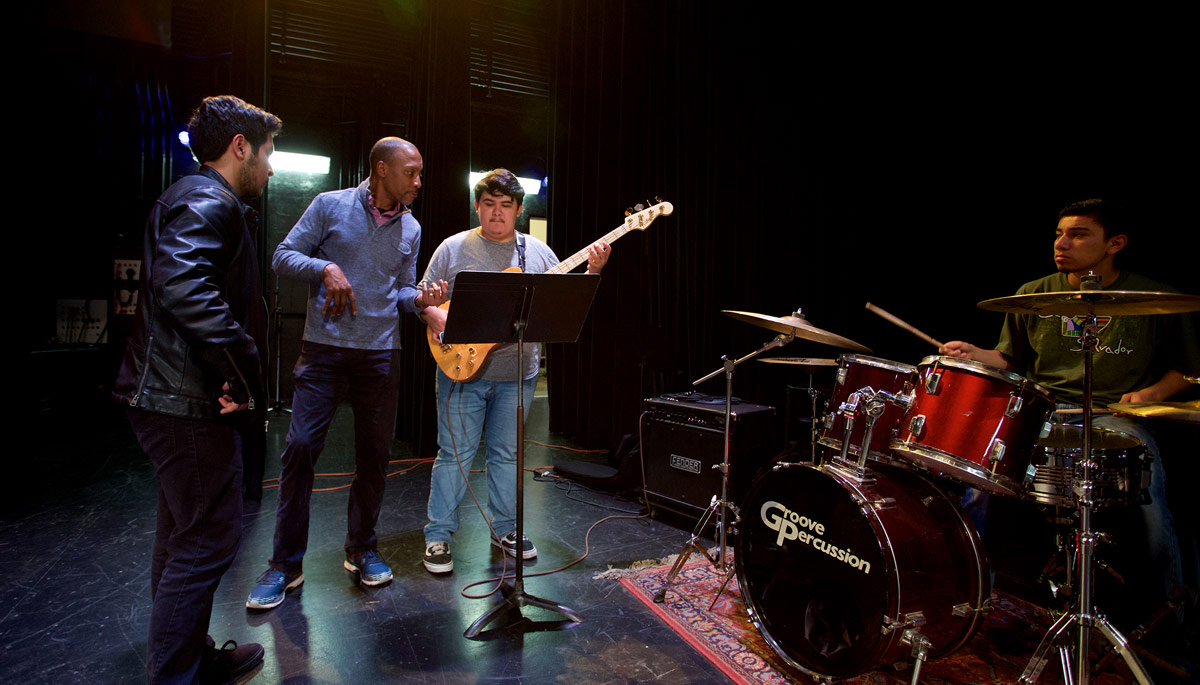
Educator and Thornton alumnus Vince Womack (center), previously profiled here, works with his jazz students at the James Foshay Learning Center in South Los Angeles. (Photo by Dario Griffin/USC Thornton)
For example, some of your students are probably interested in being a rap producer, but do they know what that entails on a day-to-day basis? Do you? If you don’t, be resourceful. You probably know a musician in your network who can offer insight.
Maybe your students want to be in a rock band. Show them what it’s like by organizing a community event featuring student-created music and letting them assist in the preparation and production of the show.
Finally, as an artist-teacher, your education doesn’t have to stop when you leave university. As you continue to grow as a musician and incorporate your experiences in the classroom your students will benefit as a result.
At the core of all of these contemporary music teaching strategies is an awareness that the role of the music educator has changed over the past decade. Music teachers need to ‘step off the podium’ and embrace their students’ expertise and interests to create engaging and relevant pedagogy. That means that more than anything the new music educator needs to begin to see him or herself as a perpetual learner – from new technologies, new musical content and students themselves. Creating a ‘community of musical inquirers’ is the ultimate goal and the path to life-long musical engagement for students and teachers alike.

